147 have author last names that start with S have author last names that start with S
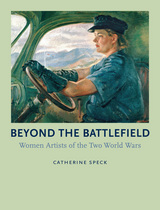
In addition to following high-profile artists such as American photographer Lee Miller, Speck recounts the experiences of nurses, voluntary aides, and ambulance drivers who found the time to create astonishing artworks in the midst of war zones. She also describes the feelings of disempowerment revealed in the work done by women distant from the conflict. As Speck shows, women artists created highly charged emotional responses to the threats, sufferings, and horrors of war—the constant fear of attack, the sorrow of innocent lives destroyed, the mass murders of people in concentration camps, and the unimaginable aftermath of the atomic bombs. The first book to explore female creativity during these periods, Beyond the Battlefield delivers an insightful and meditative examination of this art that will appeal to readers of art history, war history, and cultural studies.

Using the work of archaeologists and paleoanthropologists, Spellman examines how interpreting physical remains gives us insight into prehistoric perspectives on death. He traces how humans have died over the centuries, both in the causes of death and in the views of actions that lead to death. He spotlights the great philosophical and scientific traditions of the West, which did not believe in an afterlife or see the purpose of bereavement, while also casting new light on the major religious beliefs that emerged in the ancient world, particularly the centuries-long development of Christianity. He delves into three approaches to the meaning of death—the negation of life, continuity in another form, and agnosticism—from both religious and secular-scientific perspectives.
Providing a deeper context for contemporary debates over end-of-life issues and the tension between longevity and quality of life, A Brief History of Death is an illuminating look at the complex ways humans face death and the dying.

Spellman examines the intellectual assumptions behind different models of monarchy, tracing the ways in which each of these assumptions shifted in response to historical factors. While no human institution has retreated as rapidly in the modern period, monarchy's remarkable longevity invites us to weigh the significance of hierarchy, subordination and dependence as constants of the human experience.
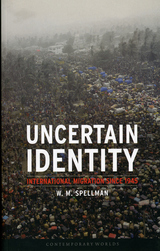
W. M. Spellman chronicles how after 1945, migration patterns expanded in numbers of people and origin countries, due to overpopulation, poverty, violent conflicts, and the lowered costs of air travel. Uncertain Identity sets these patterns in the context of issues such as the impact of voluntary and forced relocation on the migrants and destination countries, the significance of south-to-north migrations, and recent enactments of restrictive immigration measures in developed nations. Spellman also considers temporary and refugee migrations and the ways in which refugees maintain cultural traditions despite their new environments.
An incisive study with global breadth, Uncertain Identity offers invaluable analysis for specialists in political science, sociology, and economics.

Beginning with Chomsky’s formative years as a sixteen-year-old student at the University of Pennsylvania, Sperlich traces his education in linguistics and politics in its rich historical context. He explores Chomsky’s main intellectual influences, particularly in language studies, and charts his strained relationship with mainstream American academia. Sperlich also offers an informed overview of Chomsky’s landmark linguistic contributions as a comprehensive introduction to his work, and he explains the latest developments in Chomskyan linguistics and how they influence research in fields as varied as neuroscience, biology, and evolution. Sperlich is equally attentive to Chomsky's political activism: through Sperlich’s account we follow Chomsky from his pacifist-anarchist lectures and writings of the 1950s and 1960s to his seminal 1988 treatise, Manufacturing Consent, and his relentless criticism of the American government over two decades.
A compact and rich biographical study, Noam Chomsky is a brilliant introduction to one of the most polarizing intellectuals of our time, a thinker whose words continue to pierce the heart of public discourse.


Following the 9/11 attacks and the anthrax letters that appeared in their wake, the threat posed by the widespread accessibility of chemical and biological weapons has continually been used to stir public fear and opinion by politicians and the media alike. In Chemical and Biological Weapons, Edward M. Spiers cuts through the scare tactics and hype to provide a thorough and even-handed examination of the weapons themselves—the various types and effects—and their evolution from World War I to the present.
Spiers describes the similarities and differences between the two types of weapons and how technological advancements have led to tactical innovations in their use over time. As well, he gives equal attention to the international response to the proliferation of chemical and biological weapons, analyzing global efforts aimed at restraining their use, such as deterrence and disarmament, and the effectiveness of these approaches in the twentieth century. Using Iraq as a case study, Spiers also investigates its deployment of chemical weapons in the Iran-Iraq War and the attempts by the international community to disarm Iraq through the United Nations Special Commission and the United States-led war in 2003.
A timely and balanced historical survey, Chemical and Biological Weapons will be of interest to readers studying the proliferation and use of chemical and biological warfare and the reactions of the international community throughout the last several decades.
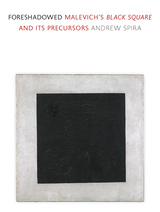
When Kasimir’s Malevich’s Black Square was produced in 1915, no one had ever seen anything like it before. And yet it does have precedents. In fact, over the previous five hundred years, several painters, writers, philosophers, scientists, and censors—each working independently towards an absolute statement of their own—alighted on the form of the black square or rectangle, as if for the first time.
This book explores the resonances between Malevich’s Black Square and its precursors, showing how a so-called genealogical thread binds them together into an intriguing, and sometimes quirky, sequence of modulations. Andrew Spira’s book explores how each predecessor both foreshadows Malevich’s work and, paradoxically, throws light on it, revealing layers of meaning that are often overlooked but which are as relevant today as ever.
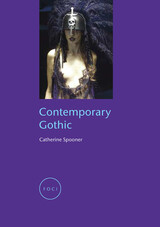
Modern Gothic culture alternately fascinates, horrifies, or bewilders many of us. We cringe at pictures of Marilyn Manson, cheer for Buffy in Buffy the Vampire Slayer, and try not to stare at the pierced and tattooed teens we pass on the streets. But what is it about this dark and morbidly morose aesthetic that fascinates us today? In Contemporary Gothic, Catherine Spooner probes the reasons behind the prevalence of the Gothic in popular culture and how it has inspired innovative new work in film, literature, music, and art.
Spooner traces the emergence of the Gothic subculture over the past few decades and examines the various aspects of contemporary society that revolve around the grotesque, abject, and artificial. The Gothic is continually resituated in different spheres of culture, she reveals, as she explores the transplantation of the “street” Goth style to haute couture runway looks by fashion designers. The Gothic also appears in a number of surprisingly diverse representations, and Spoonerconsiders them all, from the artistic excesses of Jake and Dinos Chapman to the fashions of Alexander McQueen, and from the mind-bending films of David Lynch to the abnormal postmodern subjects of Joel-Peter Witkin’s photography.
In an engaging way, Contemporary Gothic argues that this style ultimately balances a number of contradictions—the grotesque and incorporeal, authentic self-expression and campiness, mass popularity and cult appeal, comfort and outrage—and these contradictions make the Gothic a crucial expression of contemporary cultural currents. Whether seeking to understand the stories behind the TV show Supernatural or to extract deeper meanings from modern literature, Contemporary Gothic is a lively and virtually unparalleled study of the modern Gothic sensibility that pervades popular culture today.

Stafford argues that Barthes is best classified as a journalist, essayist, and critic, and he emphasizes the social preoccupations in his work—how Barthes continually worked to analyze the self and society, as well as the self in society. In doing so, Stafford paints a fascinating picture not just of Barthes, but of the entire intellectual scene of postwar France. As Barthes continues to find new readers today, this book will make the perfect introduction, even as it offers new avenues of thought for specialists.

“Ours is music with built-in hatred,” said Pete Townshend. A Band with Built-In Hate pictures the Who from their inception as the Detours in the mid-sixties to the late-seventies, post-Quadrophenia. It is a story of ambition and anger, glamor and grime, viewed through the prism of pop art and the radical leveling of high and low culture that it brought about—a drama that was aggressively performed by the band. Peter Stanfield lays down a path through the British pop revolution, its attitude, and style, as it was uniquely embodied by the Who: first, under the mentorship of arch-mod Peter Meaden, as they learned their trade in the pubs and halls of suburban London; and then with Kit Lambert and Chris Stamp, two aspiring filmmakers, at the very center of things in Soho. Guided by contemporary commentators—among them, George Melly, Lawrence Alloway, and most conspicuously Nik Cohn—Stanfield describes a band driven by belligerence and delves into what happened when Townshend, Daltrey, Moon, and Entwistle moved from back-room stages to international arenas, from explosive 45s to expansive concept albums. Above all, he tells of how the Who confronted their lost youth as it was echoed in punk.

This is the tale of how Hollywood, inspired by the success of Easy Rider, sold a cycle of films as the new dirty real. Dennis Hopper, Peter Fonda, Monte Hellman, Jack Nicholson, Kris Kristofferson, and Sam Peckinpah, among others, parlayed a nostalgia for the gutter and donned bohemian personae, pulling on soiled shirts and scuffed boots to better counter the glamour and phoniness of Tinseltown. The result was a generation of movies, including The Hired Hand, Five Easy Pieces, Two-Lane Blacktop, The Last Picture Show, and Pat Garrett and Billy the Kid. With great care for the historical record and displaying a refined critical acuity, Peter Stanfield captures that pivotal moment when Hollywood tried to sell a begrimed vision of itself to the world.

Elvis, Eddie, Chuck, Gene, Buddy, and Little Richard were the original rockers. Dylan, the Beatles, the Stones, and the Who formed rock’s second coming. As the 1960s turned into the 1970s, the crucial question was who would lead rock ’n’ roll’s third generation?
Pin-Ups 1972 tracks the London music scene during this pivotal year, all Soho sleaze, neon, grease, and leather. It begins with the dissolution of the underground and the chart success of Marc Bolan. T. Rextasy formed the backdrop to Lou Reed and Iggy Pop’s British exile and their collaborations with David Bowie. This was the year Bowie became a star and redefined the teenage wasteland. In his wake followed Roxy Music and the New York Dolls, future-tense rock ’n’ roll revivalists. Bowie, Bolan, Iggy, Lou, Roxy, and the Dolls—pin-ups for a new generation.

The first comprehensive account of the major disease-eradication campaigns from the early twentieth century right up to the present, Eradication places these ambitious goals in their broad historical and contemporary contexts. From the life and times of the American arch-eradicationist Dr. Fred Lowe Soper (1893-1977), who was at the center of many of the campaigns and controversies surrounding eradication in his lifetime, to debates between proponents of primary health care approaches to ill health versus the eradicationists, Nancy Leys Stepan’s narrative suggests that today these differing public health approaches may be complementary rather than in conflict. Enlightening for general readers and specialists alike, Eradication is an illuminating look at some of the most urgent problems of health and disease around the world.
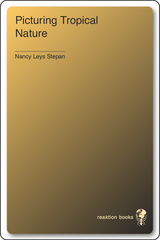
Nancy Leys Stephan asserts that images of the tropics conveyed through drawings, paintings, photographs, literature, and travel writings are central to what Stepan calls the “tropicalization of nature,” or the often harmful misrepresentation of the tropics and its peoples. She here examines several aspects of such tropicalization as they emerge through the work of nineteenth- and twentieth-century scientists and artists, including Alexander von Humboldt, Alfred Russel Wallace, Louis Agassiz, Sir Patrick Manson, and Margaret Mee. From the earliest photographic attempts to represent tropical hybrid races to depictions of disease in new tropical medicines, Picturing Tropical Nature offers new insight into the convergence of the tropics with European and American science and art.
“A brilliant and provocative book . . . the kind of book that carries forward a field in a single stride . . . undoubtedly the finest account of ‘tropicality’ we have.”—Social History of Medicine
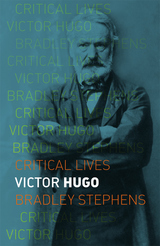
This biography, the first in English for more than twenty years, provides a concise but comprehensive exploration of Hugo’s monumental body of work within the context of his dramatic life. Hugo wrestled with family tragedy and personal misgivings while being pulled into the turmoil of the nineteenth century, from the fall of Napoleon’s Empire to the rise of France’s Third Republic. Throughout these twists of fate, he sensed a natural order of collapse and renewal. This unending cycle of creation shaped his ideas about freedom and roused his imagination, which he channeled into his prolific writing and other outlets like drawing. As Bradley Stephens argues, such creative intellectual vigor suggests that Hugo was too restless to sit comfortably on the pedestal of literary greatness; Hugo’s was a mind as revolutionary as the time in which he lived.
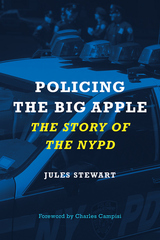
The NYPD is America’s largest and most celebrated law enforcement agency. This book examines the history of policing in New York City, from colonial days and the formation of the NYPD at the turn of the twentieth century, through 1930s battles with the Mafia to the Zero Tolerance of the 1990s. Jules Stewart explores political influence, corruption, reform, and community relations through stories of the NYPD’s commissioners and the visions they had for the force and the city, as well as at the level of cops on the beat.
This book is an indispensable chronicle for anyone interested in policing and the history of New York.

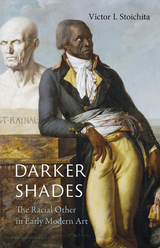
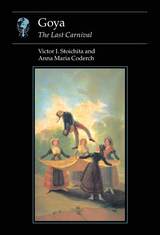
Goya waited until 1799 to publish his celebrated series of drawings, the Caprichos, which offered a personal vision of the "world turned upside down". Victor I. Stoichita and Anna Maria Coderch consider how themes of Revolution and Carnival (both seen as inversions of the established order) were obsessions in Spanish culture in this period, and make provocative connections between the close of the 1700s and the end of the Millennium. Particular emphasis is placed on the artist's links to the underground tradition of the grotesque, the ugly and the violent. Goya's drawings, considered as a personal and secret laboratory, are foregrounded in a study that also reinterprets his paintings and engravings in the cultural context of his time.
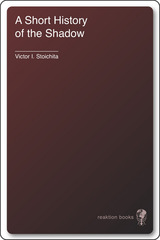
"discriminating, inspired interrogation ... dazzling analysis"—Marina Warner, Tate Magazine
"Ambitious and a pleasure to read ... a thoroughly worthwhile book."—Times Higher Education Supplement
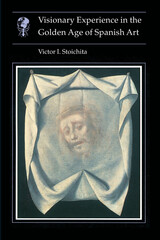
That Spanish painting is both cerebral and passionate is due to the particular historical forces which shaped it. Stoichita's account will be of crucial interest not just to scholars of Spanish art but to anyone interested in how art responds to ideological pressures.
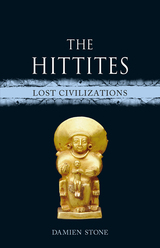
Famed for their warriors, the Hittites flourished in the region of modern Turkey from the seventeenth to thirteenth centuries BC. In this book, archaeologist Damien Stone explores the rich history of the Hittite civilization beyond their skill in battle, from religious reverence for the sun and storms to eclectic rock carvings which survive to this day. Stone describes the colorful succession of Hittite rulers, complete with assassinations, intrigue, and an evil stepmother, but he also parses the development of the Hittite language and considers the Hittites’ legacy in religion, art, and culture today. In short, The Hittites is a wide-ranging, accessible introduction to this vibrant ancient culture.

Stone takes us back to the early polytheistic religions and the important role that pomegranates had in their rituals. From there he shows how they came to be held in high esteem in Judaism, Christianity, and Islam alike, examining exciting new findings that further cement their importance: for instance, many historians believe now that it was a pomegranate, not an apple, that was the forbidden fruit in the Garden of Eden. Stone examines the allure that the pomegranate has had to a fascinating cast of famous figures, from ancient Assyrian King Ashurnasirpal to Tudor Queen Anne Boleyn, from Sandro Botticelli to Salvador Dalí. Drawing on text, image, and taste, Pomegranate is a cornucopia of strange and fascinating stories about a very special fruit.
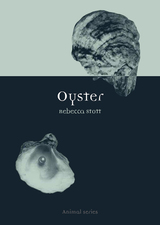
As well as an aphrodisiac, the oyster has since the earliest times been an inspiration to philosophers, artists, poets, chefs, gourmets, epicures and jewellers. It has been pursued by poachers and thieves, and defended by oyster-police and parliaments.
In Oyster, literary historian and radio broadcaster Rebecca Stott tells the extraordinary story of the oyster and its pearl, revealing how this curious creature has been used and depicted in human culture and what it has variously meant to those who have either loved or loathed it: the Romans carried much-sought-after British oysters across the Alps on the backs of donkeys to be eaten as delicacies at banquets in Rome, whilst by contrast Woody Allen once famously said "I will not eat oysters. I want my food dead – not sick, not wounded – dead."
Using many unusual images and anecdotes, Oyster will appeal to oyster lovers and haters everywhere, and for those too who have an interest in the way animals such as the oyster have woven themselves into the fabric of our culture.

Early human relationships with water were expressed through beliefs in serpentine aquatic deities: rainbow-colored, feathered or horned serpents, giant anacondas, and dragons. Representing the powers of water, these beings were bringers of life and sustenance, world creators, ancestors, guardian spirits, and lawmakers. Worshipped and appeased, they embodied people’s respect for water and its vital role in sustaining all living things. Yet today, though we still recognize that “water is life,” fresh- and saltwater ecosystems have been critically compromised by human activities. This major study of water beings and what has happened to them in different cultural and historical contexts demonstrates how and why some—but not all—societies have moved from worshipping water to wreaking havoc upon it and asks what we can do to turn the tide.

As Strang shows, our attitudes about water and the things that we rely on it for have changed dramatically over time. Once a mystical source of regenerative powers, it has since played various roles as our attitudes about hygiene, health, and disease have developed; as it has become useful to our industry; as agriculture has become ever more complex; and, of course, as we have learned to make money from it. Today water—who controls it, and how—is one of the largest issues facing our society, influencing everything from the welfare of the billions of people living on earth to the vitality of its natural habitats. Balancing history, science, and environmental and cultural studies, Strang offers an important, multi-faceted view of a critical resource.
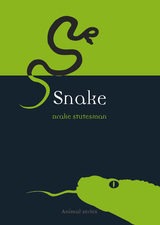
Stutesman examines a wide range of sources to investigate the complex and widespread symbolism the snake has inspired, including the serpent's temptation of Eve in the Bible, Kaa in The Jungle Book, the Chinese zodiac, Indian snake charmers, and the Hollywood film Anaconda. She looks at the role snakes have played in human culture and science, from snake cuisine and the use of venom in medicine to the intriguing history of snake symbolism in art, architecture, cinema, and even clothing. Richly illustrated and written in an engaging style, Snake is an invaluable resource for snake enthusiasts and scholars, as well as for all who love, admire, or fear this fascinating and enduring animal.
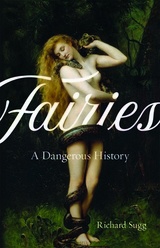
In literature and art, the fairies still retained this edge of danger. From the wild magic of A Midsummer Night’s Dream, through the dark glamour of Keats, Christina Rosetti’s improbably erotic poem “Goblin Market,” or the paintings inspired by opium dreams, the amoral otherness of the fairies ran side-by-side with the newly delicate or feminized creations of the Victorian world. In the past thirty years, the enduring link between fairies and nature has been robustly exploited by eco-warriors and conservationists, from Ireland to Iceland. As changeable as changelings themselves, fairies have transformed over time like no other supernatural beings. And in this book, Richard Sugg tells the story of how the fairies went from terror to Tink.
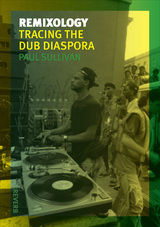
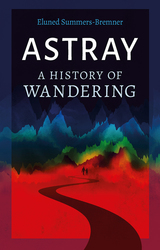
This book explores how, far from being an act limited to deviation from known pathways or desirable plans of action, wandering is an abundant source of meaning—a force as intimately involved in the history of our universe as it will be in the future of our planet. In ancient Australian Aboriginal cosmology, in works about the origins of democracy and surviving disasters in ancient Greece, in Eurasian steppe nomadic culture, in the lifeways of the Roma, in the movements of today’s refugees, and in our attempts to preserve spaces of untracked online freedom, wandering is how creativity and skills of adaptation are preserved in the interests of ongoing life. Astray is an enthralling look at belonging and at notions of alienation and hope.

In today’s media-saturated and hyperconnected society, increasing numbers of people are finding it hard to switch off their overstimulated brains and escape the demands of daily life. We are becoming, it seems, a world of insomniacs. But this condition of perpetual unrest has plagued people for centuries. The roots and effects of insomnia are complex, Eluned Summers-Bremner reveals in this fascinating study, and humans have employed everything from art to science to understand, explain, and mitigate this problem.
The author begins her exploration of sleeplessness with the literature of ancient times, finding its sufferers in such prominent texts as the Iliad, the Mesopotamian epic Gilgamesh, and the Bible. Insomnia continued to figure large in Romantic and Gothic literature, as the advent of street lighting in the nineteenth century inspired the fantastical blurring of daytime reality and night specters, and authors connected insomnia to the ephemeral worlds of nightmares and the sublime. Meanwhile, throughout the ages insomnia has been variously categorized by the medical community as a symptom of deeper maladies: in medieval and early modern times, for example, physicians and philosophers saw insomnia as a sign of lovesickness, melancholy, or even demonic possession. As modern medicine and science evolved, insomnia emerged as a distinct symptom of such ailments as post-traumatic stress disorder after war. Today’s medical solutions tend to involve prescription drugs, and Insomnia ultimately raises important questions about the role of the pharmaceutical industry and the effectiveness of such treatments.
Bedside reading of the most useful sort, Insomnia won’t put you to sleep, but it will help you understand your problem and its surprisingly rich cultural legacy.

Sutherland airs out the odors, fetors, stenches, and reeks trapped in the pages of Orwell’s books. From Winston Smith’s apartment in Nineteen Eighty-Four, which “smelt of boiled cabbage and old rag mats,” to the tantalizing aromas of concubine Ma Hla May’s hair in Burmese Days, with its “mingled scent of sandalwood, garlic, coconut oil, and jasmine,” Sutherland explores the scent narratives that abound in Orwell’s literary world. Along the way, he elucidates questions that have remained unanswered in previous biographies, addressing gaps that have kept the writer elusively from us. In doing so, Sutherland offers an entertaining but enriching look at one of the most important writers of the twentieth century and, moreover, an entirely new and sensuous way to approach literature: nose first.

Brexit shook Britain to its roots and sent shockwaves across the world. But despite the referendum victory, Brexit is peculiarly hollow. It is an idea without political apparatus, without sustaining history, without field-tested ideology. As Sutherland argues: it is without thinkers—like Frankenstein waiting for the lightning bolt. In this irreverent, entertaining, and utterly tongue-in-cheek new guide, Sutherland suggests some stuffing for the ideological vacuity at the heart of the Brexit cause. He looks for meaning in the works of William Shakespeare, Jane Austen, and Thomas Hardy; in modern classics like The Queen and I and London Fields; and in the British national anthem, school songs, and poetry.
Exploring what Britain meant, means, and will mean, Sutherland subtly shows how great literary works have a shaping influence on the world. Witty and insightful, and with a preface by Guardian columnist and critic John Crace, this book belongs on the shelves of anyone seeking to understand the bragging Brexiteers (and the many diehard Remoaners, too).

Sutton begins by describing the fig’s strange biology—botanically, it is not a fruit, but rather a cluster of ingrowing flowers—then considers its Arabian origins, including the possibility that the earliest seeds were transported from Yemen to Mesopotamia in the dung of donkeys. Exploring the history of the fruit in fascinating detail, Sutton postulates that the “forbidden fruit” eaten by Adam and Eve was not an apple, but a fig; and he discusses the role figs played for the Crusaders and guides readers toward the wonderful fig festivals held today. Chock full of tasty recipes, intriguing facts, and bizarre stories, Figs is a toothsome book of delights.
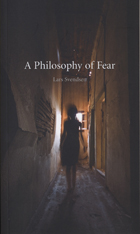
Svendsen delves into science, politics, sociology, and literature to explore the nature of fear. He examines the biology behind the emotion, from the neuroscience underlying our “fight or flight” instinct to how fear induces us to take irrational actions in our attempts to minimize risk. The book then turns to the political and social realms, investigating the role of fear in the philosophies of Machiavelli and Hobbes, the rise of the modern “risk society,” and how fear has eroded social trust. Entertainment such as the television show “Fear Factor,” competition in extreme sports, and the political use of fear in the ongoing “War on Terror” all come under Svendsen’s probing gaze, as he investigates whether we can ever disentangle ourselves from the continual state of alarm that defines our age.
Svendsen ultimately argues for the possibility of a brighter, less fearful future that is marked by a triumph of humanist optimism. An incisive and thought-provoking meditation, A Philosophy of Fear pulls back the curtain that shrouds dangers imagined and real, forcing us to confront our fears and why we hold to them.

Drawing upon both philosophical analysis and the latest scientific discoveries, Svendsen argues that the knowledge we glean from our relationships with our pets is as valid and insightful as any scientific study of human-animal relations. With this entertaining and thought-provoking book, animal lovers and pet owners will gain a deeper understanding of what it is like to be an animal—and in turn, a human.
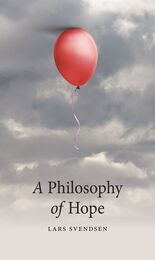
In this book Lars Svendsen embarks on a profound exploration of the nature of hope, asking what exactly hope is and how it differs from related phenomena such as wishful thinking. He argues that hope is rooted in the ability to shape one’s future, crucial for a society built on freedom instead of fear. Svendsen highlights hope’s vital role in giving life meaning, and its intimate connection to identity. He shows that, while hope cannot magically transform the world, it can empower individuals to focus on achievable goals rather than pressing challenges.
Ultimately, A Philosophy of Hope demonstrates the capacity of hope to propel both individuals and the world in a positive direction.

From popular philosopher Lars Svendsen, this book is a comprehensive investigation of lying in everyday life. What exactly is a lie, Svendsen asks, and how does lying differ from related phenomena, such as “bullshit” or being truthful? Svendsen also investigates the ethics of lying—why is lying almost always morally wrong, and why is lying to one’s friends especially bad? The book concludes by looking at lying in politics, from Plato’s theory of the “noble lie” to the Big Lie of Donald Trump.
As phrases like “fake news” and “alternative facts” permeate our feeds, Svendsen’s conclusion is perhaps a surprising one: that, even though we all occasionally lie, we are for the most part trustworthy. Trusting others makes one vulnerable, and we will all be duped from time to time. But all things considered, Svendsen contends, truthfulness and vulnerability are preferable to living in a constant state of distrust.
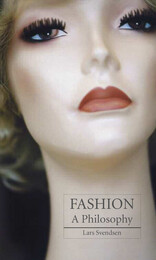
Fashion is at once a familiar yet mysteriously elite world that we all experience, whether we’re buying a new pair of jeans, reading Vogue, or watching the latest episode of Project Runway. Lars Svendsen dives into that world in Fashion, exploring the myths, ideas, and history that make up haute couture, the must-have trends over the centuries, and the very concept of fashion itself.
Fashion opens with an exploration of all the possible meanings encompassed by the word “fashion,” as Svendsen probes its elusive place in art, politics, and history. Ultimately, however, he focuses on the most common use of the term: clothing. With his trademark dry wit, he deftly dismantles many of the axioms of the industry and its supporters. For example, he points out that some of the latest fashions shown on runways aren’t actually “fashionable” in any sense of the word, arguing that they’re more akin to modern art works, and he argues against the increasingly prevalent idea that plastic surgery and body modification are part of a new wave of consumerism. Svendsen draws upon the writings of thinkers from Adam Smith to Roland Barthes to analyze fashion as both a historical phenomenon and a philosophy of aesthetics. He also traces the connections between the concepts of fashion and modernity and ultimately considers the importance of evolving fashions to such fields as art, politics, and philosophy.
Whether critiquing a relentless media culture that promotes perfect bodies or parsing the never-ending debate over the merits of conformity versus individual style, Lars Svendsen offers an engaging and intriguing analysis of fashion and the motivations behind its constant pursuit of the new.
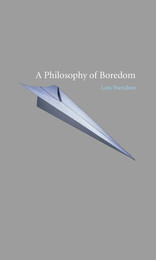
Lars Svendsen brings together observations from philosophy, literature, psychology, theology, and popular culture, examining boredom's pre-Romantic manifestations in medieval torpor, philosophical musings on boredom from Pascal to Nietzsche, and modern explorations into alienation and transgression by twentieth-century artists from Beckett to Warhol. A witty and entertaining account of our dullest moments and most maddening days, A Philosophy of Boredom will appeal to anyone curious to know what lies beneath the overwhelming inertia of inactivity.
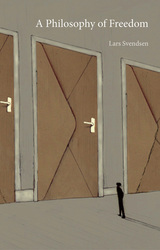
A Philosophy of Freedom questions how we can successfully create meaningful lives when we are estranged from the very concept of freedom. Svendsen tackles such issues as the nature of free agency and the possibility of freedom in a universe governed by natural laws. He concludes that the true definition of personal freedom is first and foremost the liberty to devote yourself to what really matters to you—to realize the true value of the life you are living. Drawing on the fascinating debates around the possibility of freedom and its limits within society, this comprehensive investigation provides an accessible and insightful overview that will appeal to academics and general readers alike.
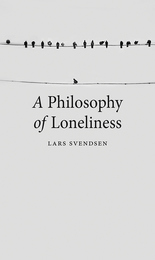
Drawing on the latest research in philosophy, psychology, and the social sciences, A Philosophy of Loneliness explores the different kinds of loneliness and examines the psychological and social characteristics that dispose people to them. Svendsen looks at the importance of friendship and love, and he examines how loneliness can impact our quality of life and affect our physical and mental health. In a provocative move, he also argues that the main problem in our modern society is not that we have too much loneliness but rather too little solitude, and he looks to those moments when our loneliness can actually tell us profound things about ourselves and our place in the world. The result is a fascinating book about a complex and deeply meaningful part of our very being.

The Lisbon Earthquake of 1755. The South Asian Tsunami of 2004. The San Francisco Earthquake of 1906. Hurricane Katrina in 2005. All of these are natural disasters that not only caused massive devastation but actually changed the course of history, and have influenced our reactions to and perspectives on disasters ever since.
Spanning two millennia, The End is Nigh provides a detailed history of natural disasters around the world and how they have shaped our cultural beliefs and our practical planning. Henrik Svensen draws from many eyewitness accounts to reveal the personal stories of the victims of natural disasters. Through them, we are reminded that while the disasters are natural phenomena, victims often react in similar ways seeking to explain the disaster within the context of an omen or a divine warning. A geologist, Svensen also explores the science behind the occurrence of specific disasters, and he examines whether climate change is creating an environment where natural disasters are more frequent and more deadly.
The End is Nigh is as instructive as it is insightful and will appeal to fans of history and science, as well as policy makers and all those seeking to better prepare for future calamities.
“The End is Nigh is a great example of storytelling across scientific disciplines, and in gripping prose it spans geology, geography and history, anthropology, sociology, and the history of religion.”—Apollon
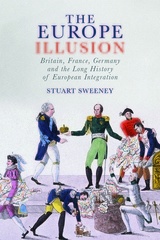
In this book, Joost Keizer argues that the comparison between word and image fuelled Leonardo’s thought. The paradoxes at the heart of Leonardo’s ideas and practice also defined some of Renaissance culture’s central assumptions about culture and nature: that there is a look to script, that painting offered a path out of culture and back to nature, that the meaning of images emerged in comparison with words, and that the difference between image-making and writing also amounted to a difference in the experience of time.
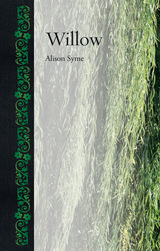
Syme examines the manifold practical uses of the tree, discussing the application of its bark in medicines, its production as an energy crop that produces biofuel and charcoal, and its employment for soil stabilization and other environmental protection schemes. But despite all the functional uses of willows, she argues, we must also heed the lessons they teach about living, dying, and enriching our world. Looking at the roles that willows have played in folklore, religion, and art, she parses their connections to grief and joy, toil and play, necessity and ornament. Filled with one hundred images, Willow is a seamless account of the singular place the willow holds in our culture.
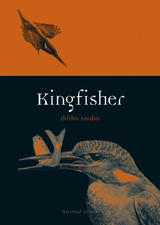
This lavishly illustrated book delves into the origins and diversity of the more than 120 species of kingfishers, from the burly kookaburras to the diminutive birds that daringly pluck spiders off webs, defining their characteristics, their differences, their lifestyles, and their cultural significance around the world.
READERS
Browse our collection.
PUBLISHERS
See BiblioVault's publisher services.
STUDENT SERVICES
Files for college accessibility offices.
UChicago Accessibility Resources
home | accessibility | search | about | contact us
BiblioVault ® 2001 - 2024
The University of Chicago Press









